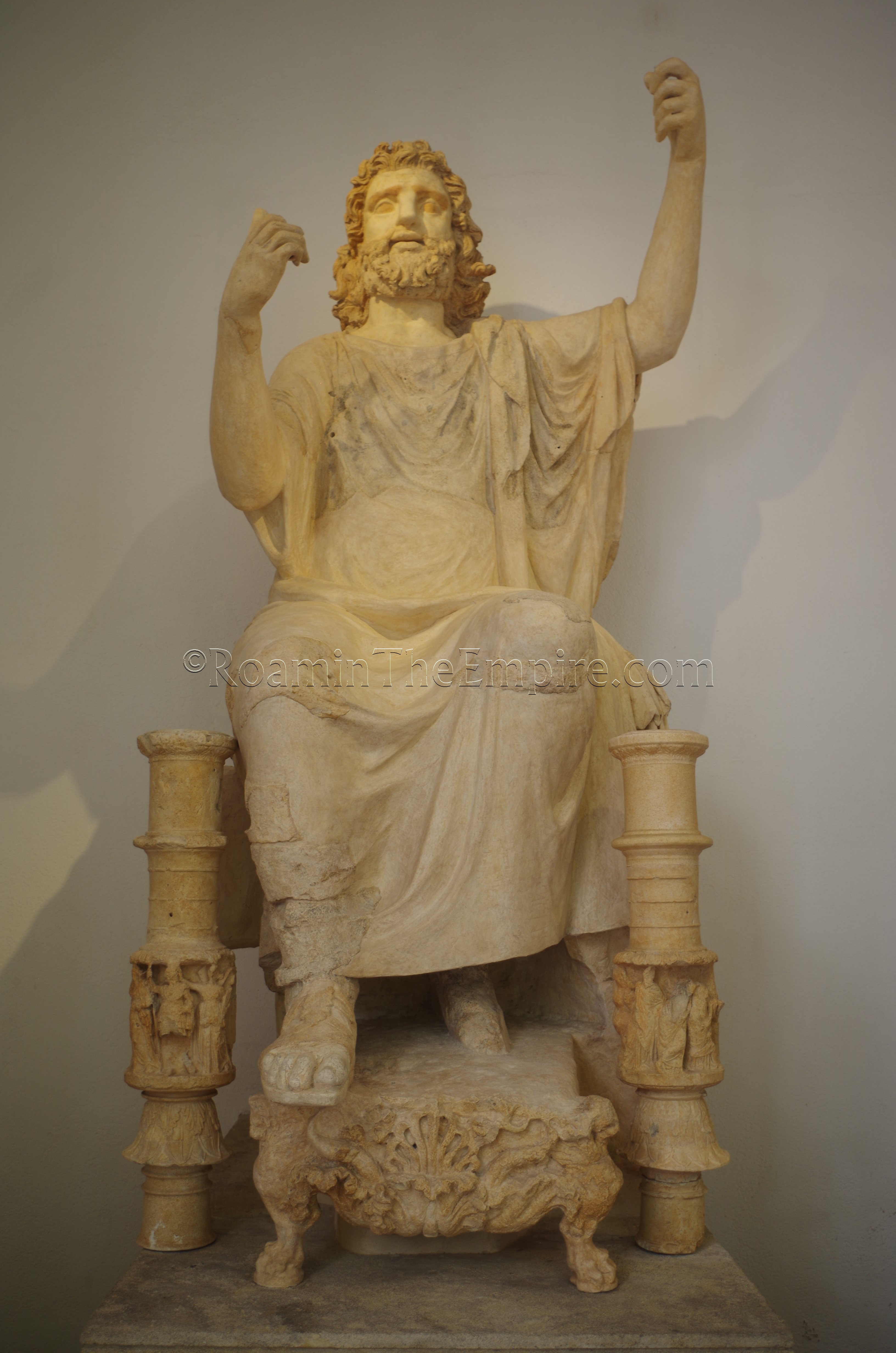
Most Recent Visit: June 2017.
Continued From Panormus Part I
In the central part of the city, at Piazza Olivella 24, is the Museo Archaeologico Regionale ‘Antonino Salinas’. Along with the museums in Agrigento and Syracuse, the museum here is one of the primary collections of archaeological material on the island. With the exception of the immediate area of Agrigento, it is the primary repository for artifacts from the western side of the island. The museum is open between Tuesday and Saturday from 9:30 to 18:30. Sundays and holidays it is open from 9:30 to 13:30, and it is closed on Monday. The current admission is set at the normal reduced rate of 3 Euros, due to ongoing renovations.
As previously mentioned, the museum is in the midst of some long-term renovations. Between July 2011 and September 2015, the museum was closed completely. Starting in September of 2015, though, the ground floor was opened with a portion of the collection. When I visited in 2017, and at the time of this writing, the museum was still under renovation and the first floor was still the only accessible part of the museum. Somehow I didn’t catch this fact before I went, so, I was somewhat surprised, expecting to spend several hours here, when I was met with the closure of everything but the first floor. Speaking to one of the museum attendants, I was assured that the whole collection had been moved to the first floor while the renovations were ongoing. This obviously isn’t the case, as three floors worth of material wouldn’t fit in the relatively small space of the ground floor, and there are some very obvious things missing; such as no mosaics on display at all. There doesn’t seem to be any definitive expected end date for the renovations.
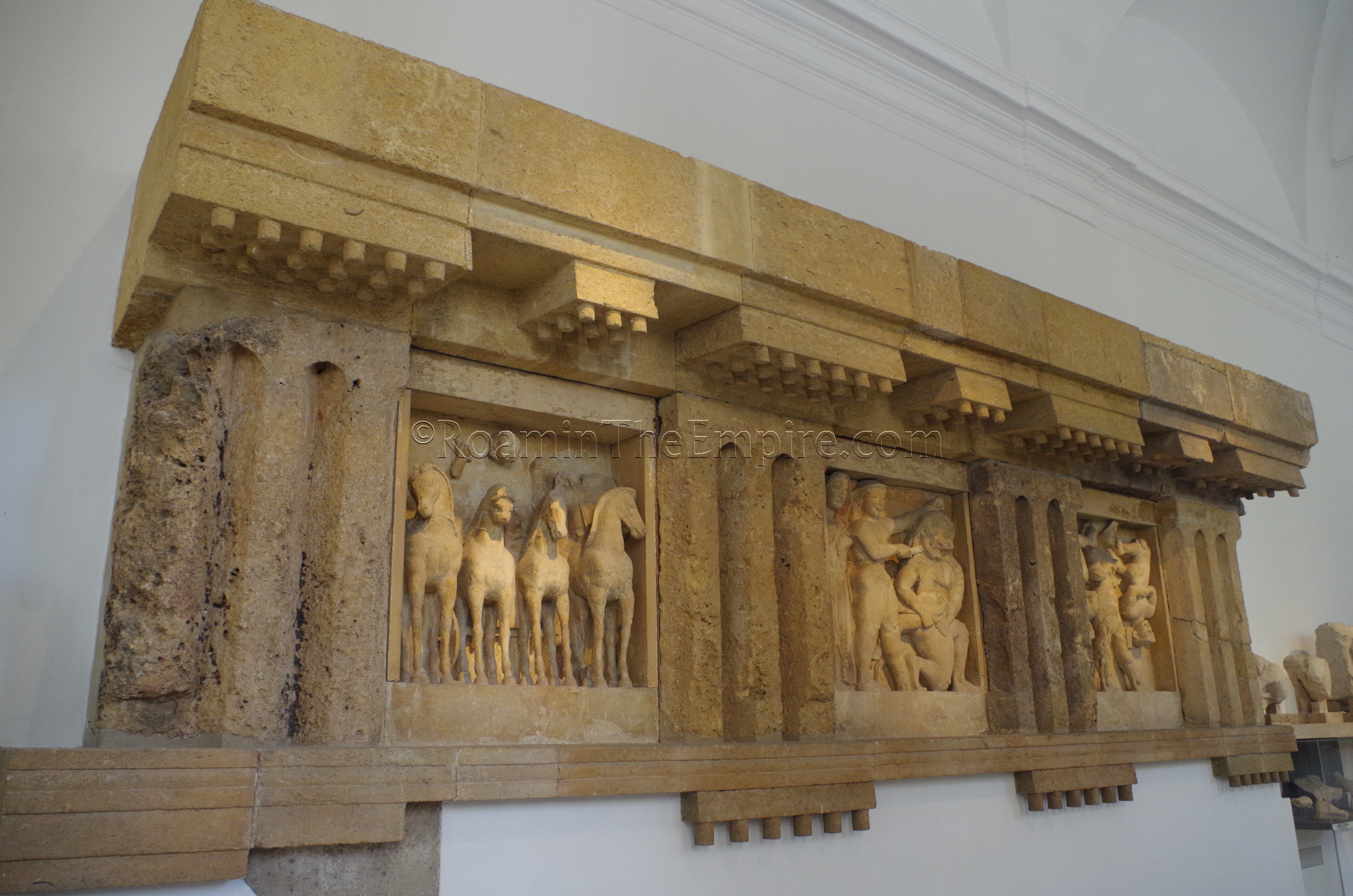
Despite all this, the collection that was on display was still pretty impressive and well worth the reduced price of admission. Given that it is such a major museum on the island, even a portion of the collection is quite interesting. A good portion of that first floor is dedicated to finds from Selunite as well other Greek cities in the western portion of Sicily. In the portico around the courtyard, there is more of a mix of material from some different collections, and there is a fair amount of Roman material here, including some nice large sculptural pieces. Near the entrance is an epigraphic exhibit that includes some nice inscriptions, including some inscribed sling bullets and the Entella Decrees, a set of bronze tablets with decrees of friendship between Entella and surrounding cities including Segesta and Enna.
Again, even in its truncated form, the museum offers quite a lot to see. I didn’t spend the hours I had intended, and I perhaps even moved a little fast at first, expecting I had two more floors of material to see (I didn’t fully realize the closure until after I had already gone through the entire first floor), but, there was still a solid hour of material, perhaps two if moving at a more reasonable speed. It was disappointing to essentially miss out on 2/3rds of the collection, but, I have to give them credit for opening up part of the museum during the renovations and charging a reduced fee. Most of the information in the museum is presented in both English and Italian, and the overall presentation of the material was quite nice. I didn’t see the pre-renovation museum, but, if it is going to follow the pattern of some of what is on the first floor, it will certainly be quite a nice, modern feeling museum when finished.
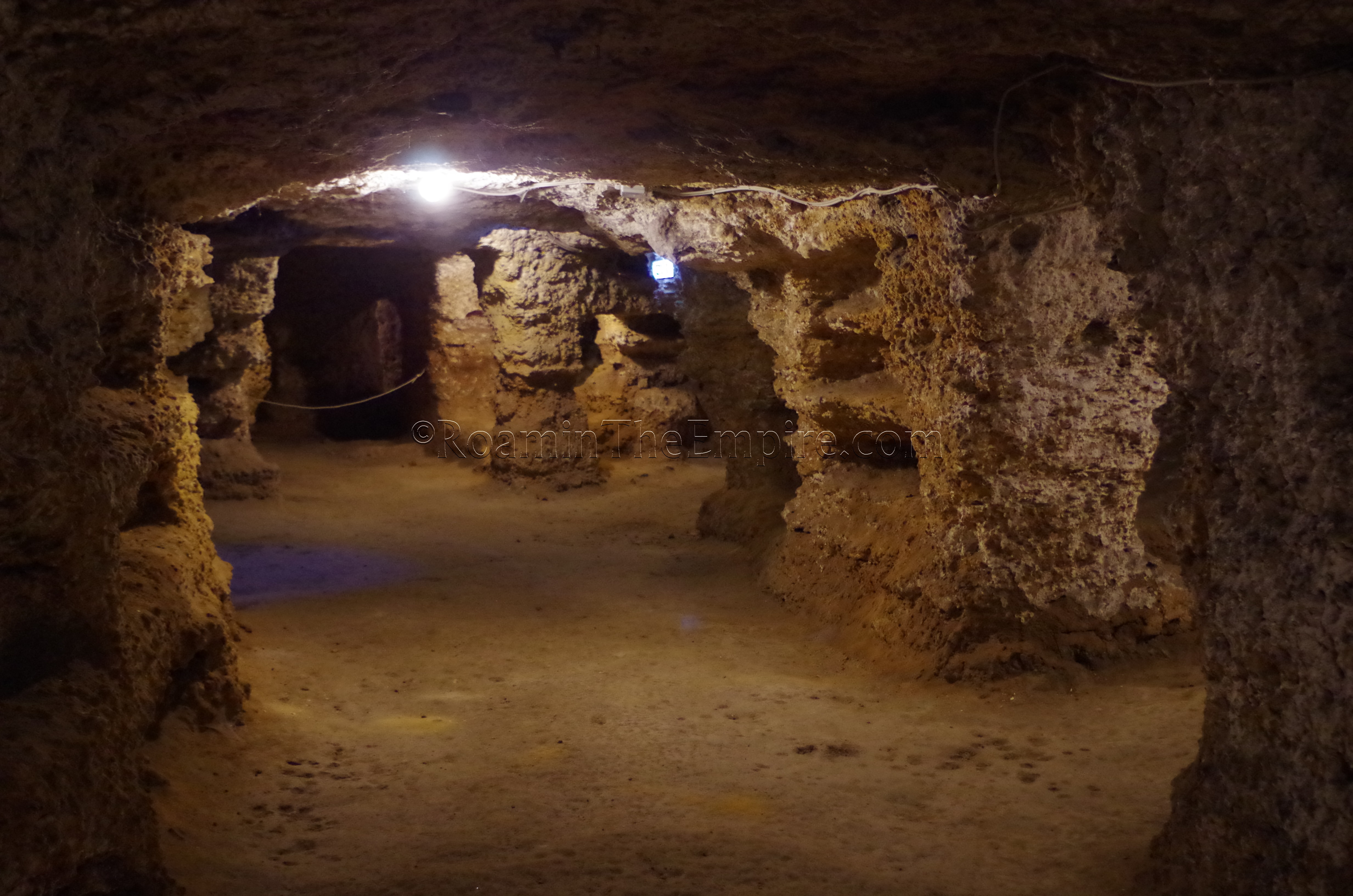
In the vicinity of Palermo, there are two vaguely Roman/Early Christian catacombs of some interest. The first is the Catacombe di Porta D’Ossuna, located within the city at Corso A. Amedeo 110. The catacombs are open on Sundays, only by reservation, between 10:00 and 13:30 and 15:00 and 17:30. The tour of the catacombs is guided and lasts about half an hour. Admission is 5 Euros. In the summer, there are occasionally events that open the catacombs on Saturday evening, but, those too need to be attended by reservation (though I suspect they would accept walk-ups as well). I went on one of the Saturday evening events, and since there was quite a crowd, all the tours were in Italian. Reservations can be made by email (info@archeofficina.com) or by phone (327 9849519 or 320 8361431 or 347 1085504).
The remains here are what one would expect, it is a series of tunnels with niches for burial. It apparently began being used in the 4th century CE and was used until the 5th or 6th century CE. Much of the plaster decoration has been lost, but there are a few places where there is some painted plaster visible.
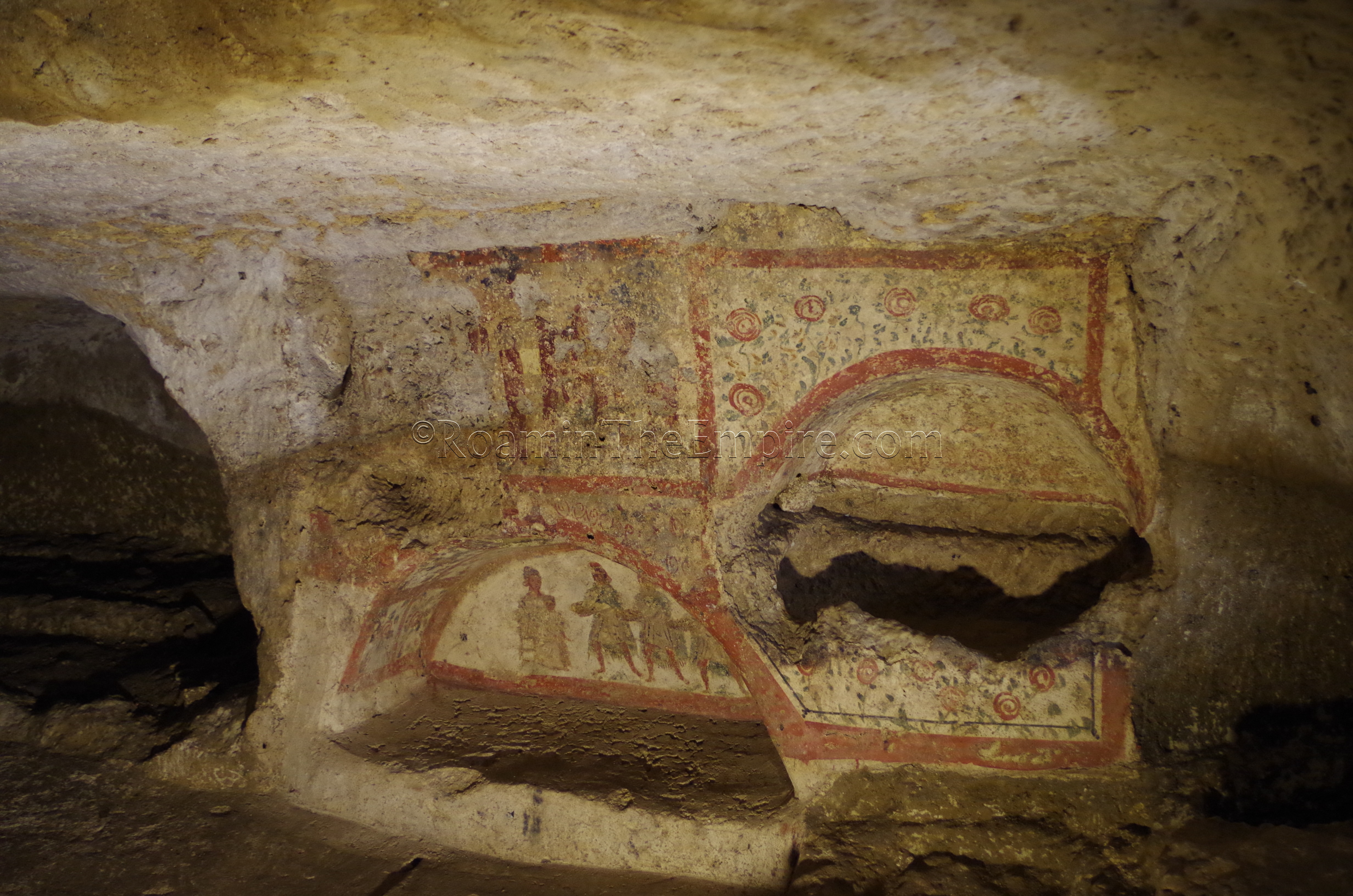
The second set of catacombs is a bit out of town, to the west, near the Punta Rasai Airport in the town of Villagrazia di Carini. As such they are the Catacombe di Villagrazia di Carini and they are located off the SS113 at Via Nazionale 3, 90044 Carini PA. There is a bus that runs from Palermo (though not from a very central location; Piazzale Giotto) to Villagrazia di Carini, but, it doesn’t seem to run on Sundays, so, for the purposes of visiting the catacombs, a bus is not a practical method and a personal vehicle is needed. Both these catacombs as well as the Catacombe di Porta D’Ossuna are run by the same organization, and as such the opening hours, admission, and contact information for reservations are the same. For these catacombs, I visited during the normal Sunday afternoon hours, and being there were just two of us, both English speakers, the guide gave a very serviceable tour in English. These catacombs, like the Catacombe di Porta D’Ossuna, seem to have started being used in the 4th century CE. These catacombs, however, were associated with the Roman town of Hyccara. The remains here are generally in a bit better condition overall, and contain some very well preserved wall paintings in some areas of the catacombs.
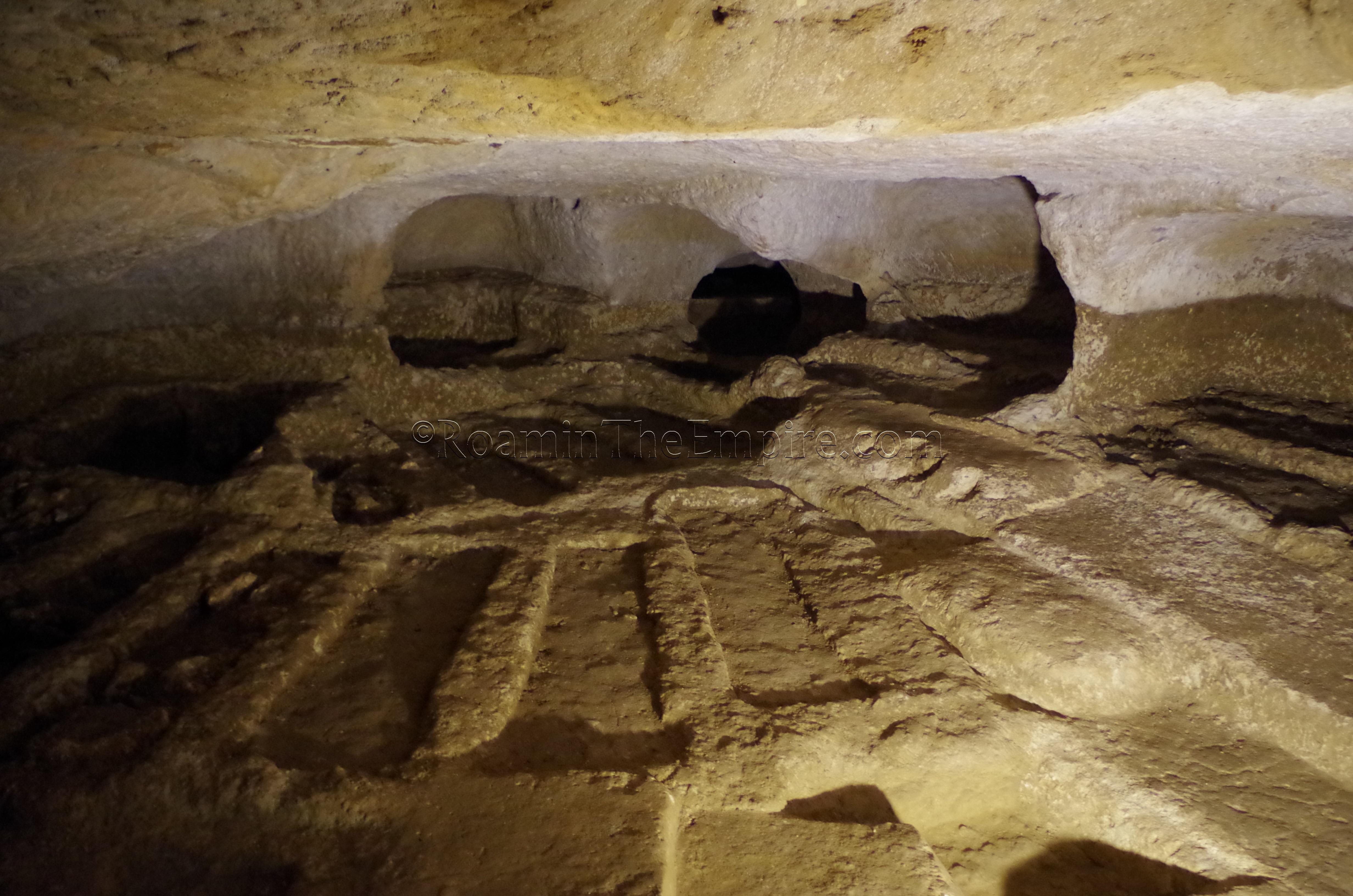
There are a few remains left from the Punic era of Panormus as well. There are apparently the remains of some of the Punic city walls scattered throughout the city, but despite my best efforts, I was unable to find any of them, or at the very least, was unable to identify anything. As I was traveling accompanied for this portion, I perhaps did not devote quite as much time to searching as I may have otherwise done. I suspect some areas of these walls are located in private courtyards as well. I may have found a stretch along Via dei Candelai, at about 68, but, it’s hard to say, as there really isn’t any indication. There is also a portion of the wall apparently visible in the courtyard of the Santa Chiara convent, but, there didn’t seem to be any access to it. There is also a section of walls that I was not able to find when I was there (though I was a mere 25 meters away and didn’t realize it) at the intersection of Salita Giuseppe Artale and Salita Ramirez at Piazza Capo.
One place where the Punic walls are verifiably visible and able to be visited (typically) is the Palazzo dei Normanni. In a room in the basement, a segment of the Punic walls can be seen. Of course, this room was under renovation when I visited (not something that is noted anywhere on the website), so, I was not able to see it. But, the room itself is named for the Punic wall, so, it’s not exceptionally difficult to find. The Palazzo dei Normanni is open Monday through Saturday from 8:15 to 17:40 and on Sundays and holidays from 8:15 to 13:00. There are a few admission options, with the cheapest being 6 Euros (and possibly not allowing access to the Punic wall room) and the most comprehensive being 12 Euros. That price is, of course, a bit steep if all you want to see is the wall (particularly if it’s not even able to be viewed), but, the beautifully mosaicked Capella Palatina is well worth the price of admission and should certainly be seen.
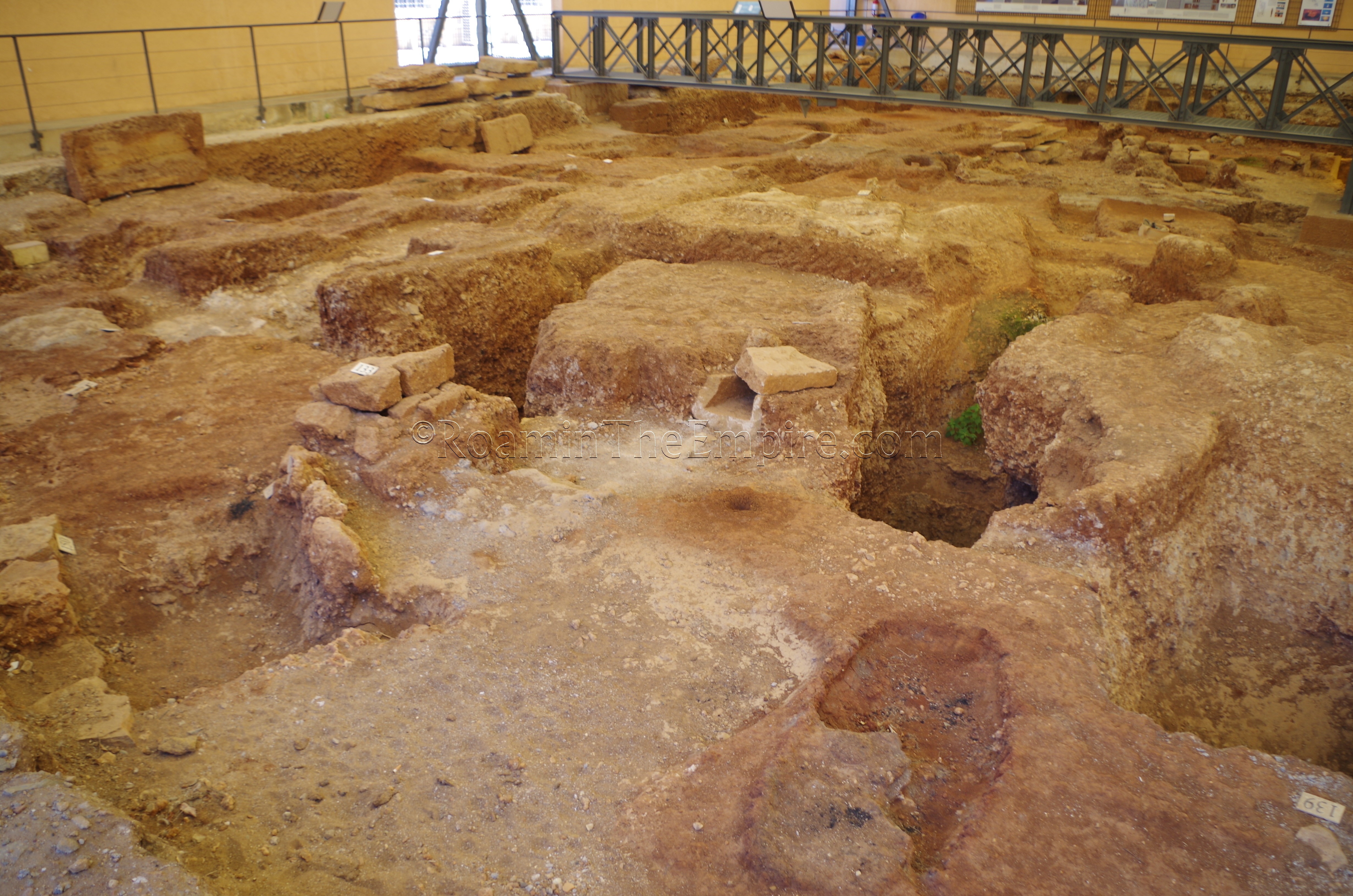
The other vestiges of the Punic era of Panormus that can be visited are a little further west from the Palazzo Normanni; and that is the Punic Necropolis (Necropoli Punica). The necropolis is located at Corso Calatafimi 100 and it is not a very well signed entry, there is just a gate and a small sign. If it is not open, which there is a good chance it will not be, despite being within the hours of operation, access can be obtained about a hundred meters back down the street, on the opposite side, at the Real Albergo dei Poveri at Corso Calatafimi 217. The offices of the Soprintendenza Beni Culturali ed Ambientali, which operates some of the cultural landmarks, are located to the right, after entering the building. Just find someone and tell them that you want to visit the Punic Necropolis, and they will find the person who has the keys to it and can let you in. The hours of access are Monday through Saturday from 9:00 to 19:00. It is closed on Sundays. Admission is 2 Euros.
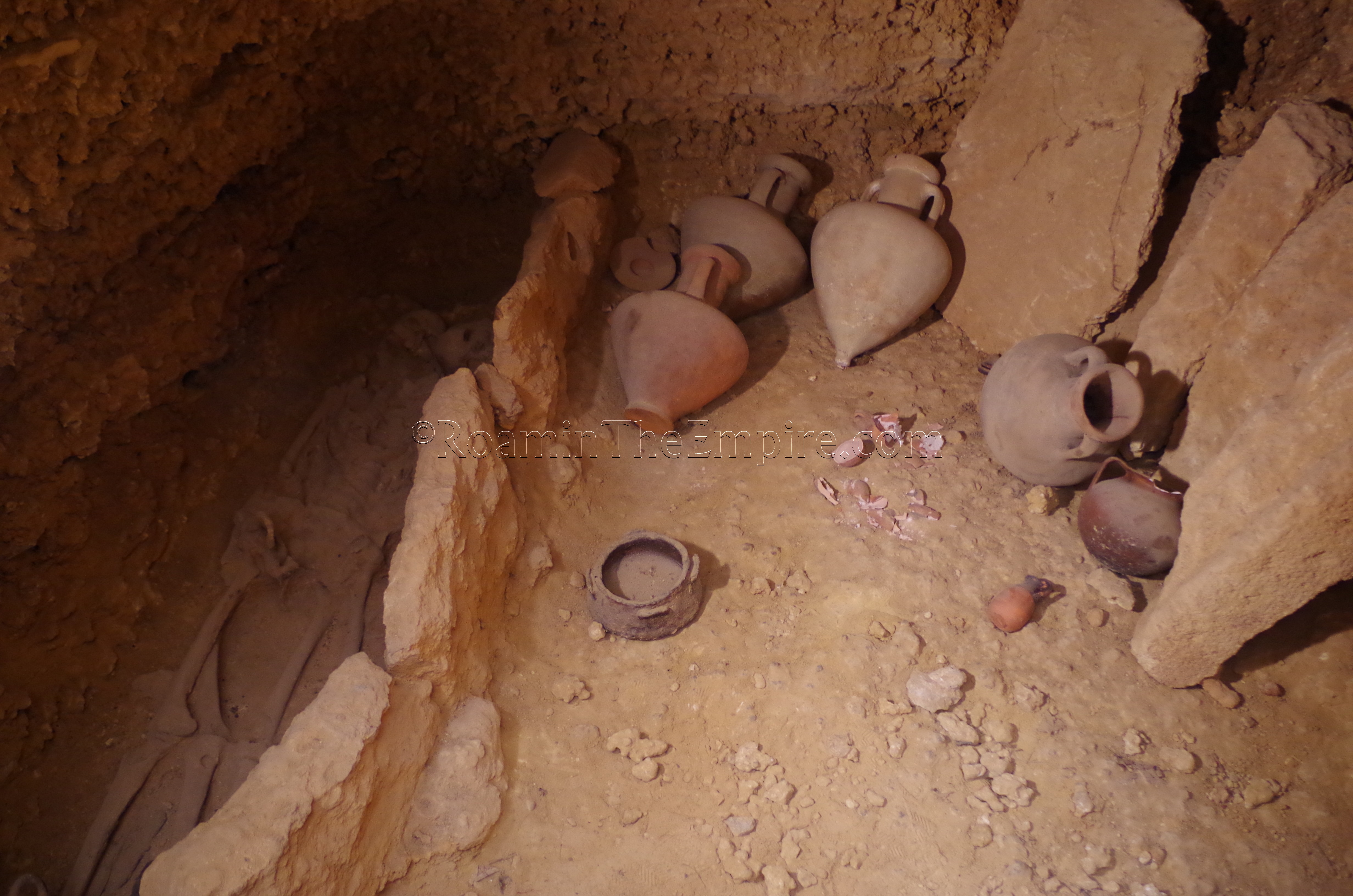
The hundred or so burials excavated in this particular patch of the large Punic necropolis that stretched over the whole area (a few hundred burials were found when the Real Albergo dei Poveri was built as well) are of a variety of at least 8 types including cinerary burials, trench burials, chamber tombs, and sarcophagi. Some are fully excavated and are essentially just empty holes, while others have reconstructed burials. While some were very obviously reconstructions with replica skeletons replacing the actual human remains, a few looked like they might be the actual remains left in-situ, but there was no documentation indicating either way. There is a walkway around the entire site, and a raised bridge crossing over the middle to give better view of some of the tombs. There is also an area that allows access down into the actual necropolis area where a few chamber tombs are excavated with seeming access down into them. I was chastised by the attendants who had let me in, however, after I started down into the second tomb. There is a fair amount of signage explaining the site and the Punic city in general, mostly in Italian but with some parts translated into English. It took me about 15-20 minutes to go through the site, though the process of getting into it can be another 10-15 minutes.
Sources:
Diodorus Siculus, Bibliotheca Historica, 13.88, 22.10, 23.18-21, 24.
Hoyos, Dexter. “Identifying Hamlicar Barca’s Heights of Heircte.” Historia: Zeitschrift Für Alte Geschichte, vol. 50, no. 4, 2001, pp. 490–495.
Morgan, M. Gwyn. “Polybius and the Date of the Battle of Panormus.” The Classical Quarterly, vol. 22, no. 1, 1972, pp. 121-129.
Polybius, Historia, 1.21, 1.24, 1.38-40, 1.56.
Rosenstein, Nathan. “Rome, Pyrrhus, and Carthage.” Rome and the Mediterranean 290 to 146 BC: The Imperial Republic, Edinburgh University Press, 2012.
Smith, Christopher John. Sicily from Aeneas to Augustus: New Approaches in Archaeology and History. Edinburgh Univ. Press, 2007.
Smith, William. Dictionary of Greek and Roman Geography. Walton & Murray, 1870.


